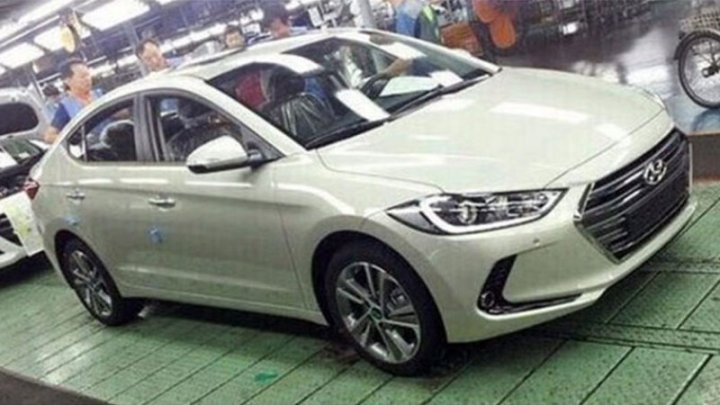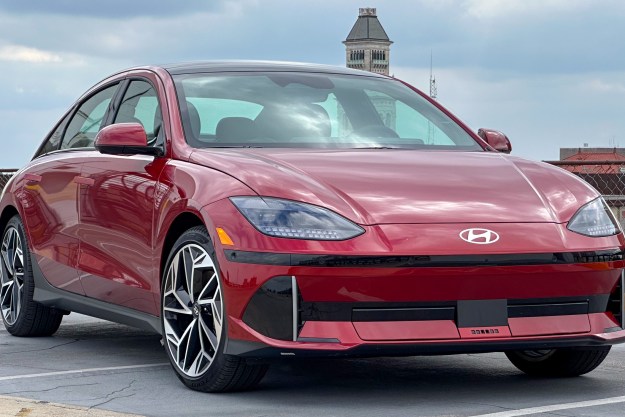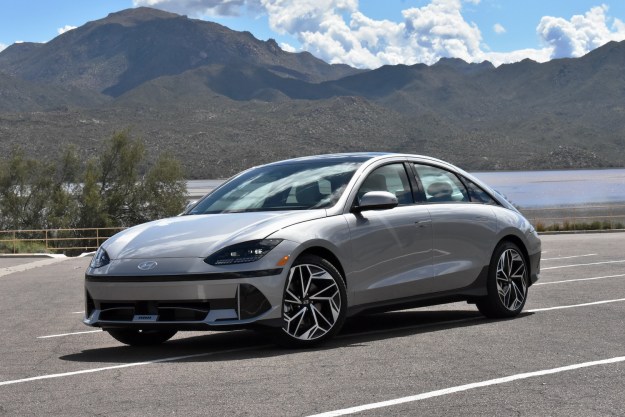
The photos were reportedly taken by a contractor at a Hyundai factory in South Korea, and were published by local car site Auto Tribune (via Autoblog). They show the car fully uncovered, revealing details only hinted at in a teaser sketch released by Hyundai earlier this month.
The Elantra is set to adopt the second-generation of Hyundai’s “Fluidic Sculpture” design language, already seen on the current Sonata and Tucson. Like those models, the Elantra appears to eschew the more radical look of the previous generation for something that more explicitly apes higher-end luxury cars.
That grille looks like it was stolen off the Audi factory floor, although the headlights and side air intakes actually seem a bit Toyota Camry-ish. The roofline still has a nice arch, but the current model’s curvy sides have been ironed out, with a single, clean crease left in their place.
The interior seems to have a pretty plain design, and includes both a center-stack display screen and some sort of secondary display between the analog gauges, plus steering-wheel mounted controls. Nothing out of the ordinary here.
Auto Tribune also reiterated a previous report that the Elantra will be offered with a 1.6-liter turbocharged four-cylinder engine producing 175 horsepower, as well as 196 pound-feet of torque. Those are identical figures to the 2016 Tucson, and it’s possible the Elantra will adopt the seven-speed dual-clutch transmission used in that model as well.
Additional engine and transmission options may also be offered, and the Elantra GT five-door hatchback may get similar changes to the sedan at some point as well. All will be revealed at the 2015 Los Angeles Auto Show in November.
Editors' Recommendations
- 2025 Hyundai Tucson Plug-In Hybrid gets improved tech features
- Hyundai bets big on hydrogen from sewage, plastic
- Amazon and Hyundai partner on online car sales, in-car services
- What it means now that Kia and Hyundai have adopted Tesla’s charging standard
- Tesla Model 3 vs. Hyundai Ioniq 6: Which electric sedan is best?


